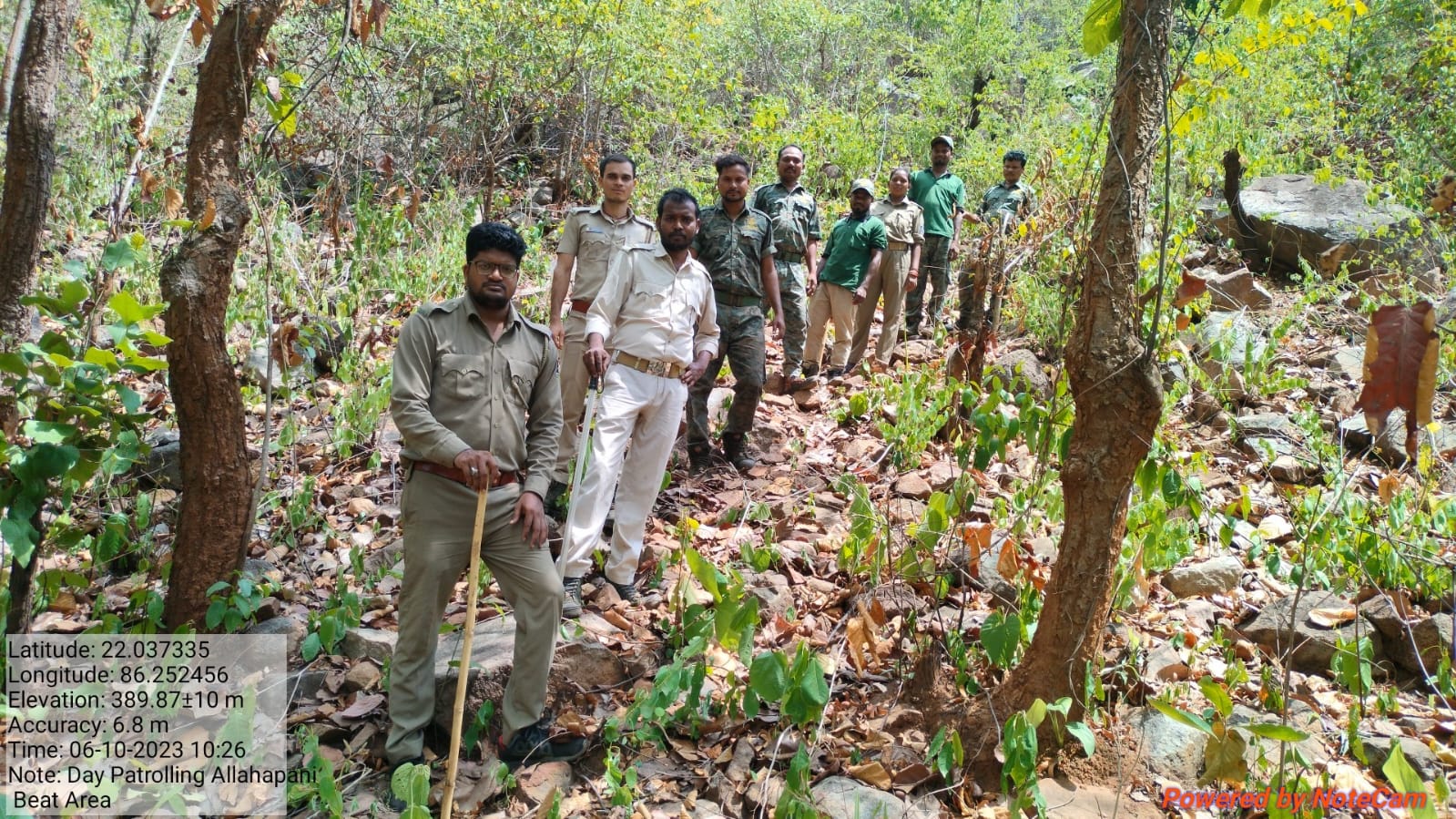- In the past three months, one forest guard and a forest ranger have been gunned down inside the Similipal Tiger Reserve in Odisha, Asia’s second-largest biosphere reserve.
- The deaths led to widespread protests by non-gazetted forest department officials seeking better security and immunity.
- In the days that followed, there have been multiple reforms, while many other proposals are being mulled over to prevent such incidents.
On May 22, Bimal Kumar Jena, 40, a forest guard posted at Baunsakhala beat under Pithabata range, in the core area of Similipal national park, was shot dead by poachers. Similipal is a tiger reserve in the Mayurbhanj district, in Odisha. This was the first such case of a forest guard being killed by poachers within the sanctuary. Almost a month later, on June 17, Mathi Hansda, 40, a forest ranger, was allegedly killed by poachers, while patrolling along with five other staff members near Gamchacharan under the Upper Barhakamuda range of Similipal South.
These deaths inadvertently shed light on not only the escalating poaching menace, but also the severe challenges faced by forest department personnel. Meanwhile, the forest department is working on improving the overall situation.
Escalating poaching
While the deaths have brought to light the lack of security and safety for the foot soldiers working in the tiger reserve area, they have also exposed the existing problem of poaching. Similipal, home to the unique melanistic tigers, has seen a drastic fall in their numbers. The population once stood at over 100 in 2002, but it has now dropped to 16, in 2022, according to the tiger estimation report released recently. However, between 2018 and 2022, the numbers doubled from eight to 16.

Since 2019, the tiger reserve has also witnessed 11 elephant deaths, with four of the deaths reported in 2021–22.
Fear and insecurity among forest officials
The non-gazetted forest service association went on strike on July 10, demanding the safety, security, and welfare of forest staff, following the recent deaths. While the protests continued, many even moved out of the tiger reserve area, fearing further consequences. In the days that followed the second death, as many as 600 protection assistants (contractual field staff) vacated the reserve, while more than 100 forest guards stopped fieldwork. To bridge this temporary gap, personnel from the police department were roped in to patrol the reserve area.
“The recent deaths have brought to light the imminent threats to our lives, as we work in the core forest areas,” said Prabhat Mohanta, a forest guard in the Similipal reserve area. “In one of the incidents, no ranger was present, and there was no vehicle to take him to the hospital on time. He could have been saved.”
Even as some of these issues are now being addressed, field staff and wildlife experts contend that improved manpower management can help address their grievances.

“We have been pressing for these demands for a long time, but it was only after the two deaths that the department started paying attention to us,” said Gagan Niranjan, a forest guard deployed inside the tiger reserve. “There is one forest guard managing a section. Under my section, there are three beats. Every beat that is spread over an area of 15–20 square kilometre has one protection assistant. So technically, it’s just the two of us per beat.”
Niranjan added that the poachers always hunt in large numbers, with some of them carrying guns and bows and arrows. “How are two people expected to tackle a group of 20-40 people?” Currently, the tiger reserve is reported to have a 40 percent staff vacancy.
Experts feel that a shortage of staff directly affects the protection mechanism. “Most of the shortage is at the beat level. To manage that, local daily wagers are roped in,” said Aditya Panda, a wildlife conservationist. “They might know the topography well but are not well-trained to tackle wild animals or poachers. So, it’s very important that large-scale recruitment of uniformed staff takes place. Enforcement has to be our main priority.”
Addressing gaps, bringing in reforms
Days after the second incident, the state forest department issued a notification granting immunity to the forest officials of the state under Section 197 of the Criminal Procedure Code (CrPC) for the use of firearms during official duties.
So, if in case of any firing by them, each such incident will be inquired into by the executive magistrate, and only if it is held in the inquiry that the use of firearms has been unwarranted, excessive, and unnecessary, criminal proceedings against the said forest officials will be initiated on acceptance of such an inquiry report by the state government.
Meanwhile, during his visit to Similipal, Forest and Environment Minister Pradip Kumar Amat also assured bullet-proof jackets for frontline forest staff, along with drones and infrared (IR) cameras to strengthen protection measures and crackdown on poachers.
A joint task force (JTF) has also been constituted to manage the protection mechanism.

“The JTF will comprise one company of armed police, that is 100 policemen,” said STR field director Prakash Chand Gogineni. “They will be placed in strategic locations for better management. Apart from this, the Similipal Tiger Protection Force will also be activated, and the team members will be trained in a proper way.”
Notably, the Similipal Tiger Protection Force, with a sanctioned post of 81, has been dysfunctional for the past few years. The ground teams will also be consolidated into bigger groups.
A mass screening of villages in the core, buffer, and adjoining areas of the tiger reserve area is also underway to confiscate any illegal arms and request that others voluntarily surrender their arms. An intelligence unit has also been set up dedicated to tracking causes of poaching.
But a bigger concern also arises on integrating the community and promoting community conservation measures. “We have proposed to set up an eco-development committee,” Gogineni said. “There are 400 villages that will be pooled together. The idea is to address their livelihood, while ensuring biodiversity conservation. The proposed budget is Rs. 300 crores spread over 10 years.”
Read more: Community conservation strengthens biodiversity in Similipal Tiger Reserve
Banner image: Awareness meeting for protection of Similipal reserve area and surrender of weapons held in Mahuldiha village in the buffer area of the forest. Photo by Aishwarya Mohanty.














